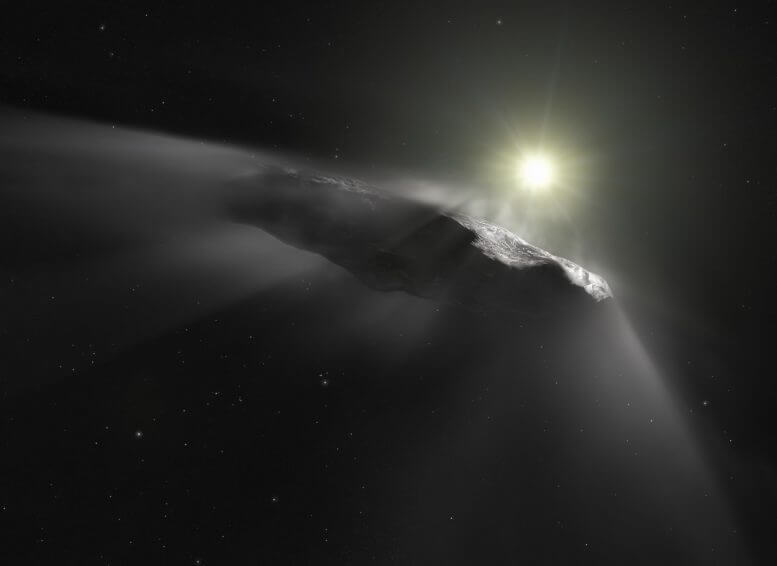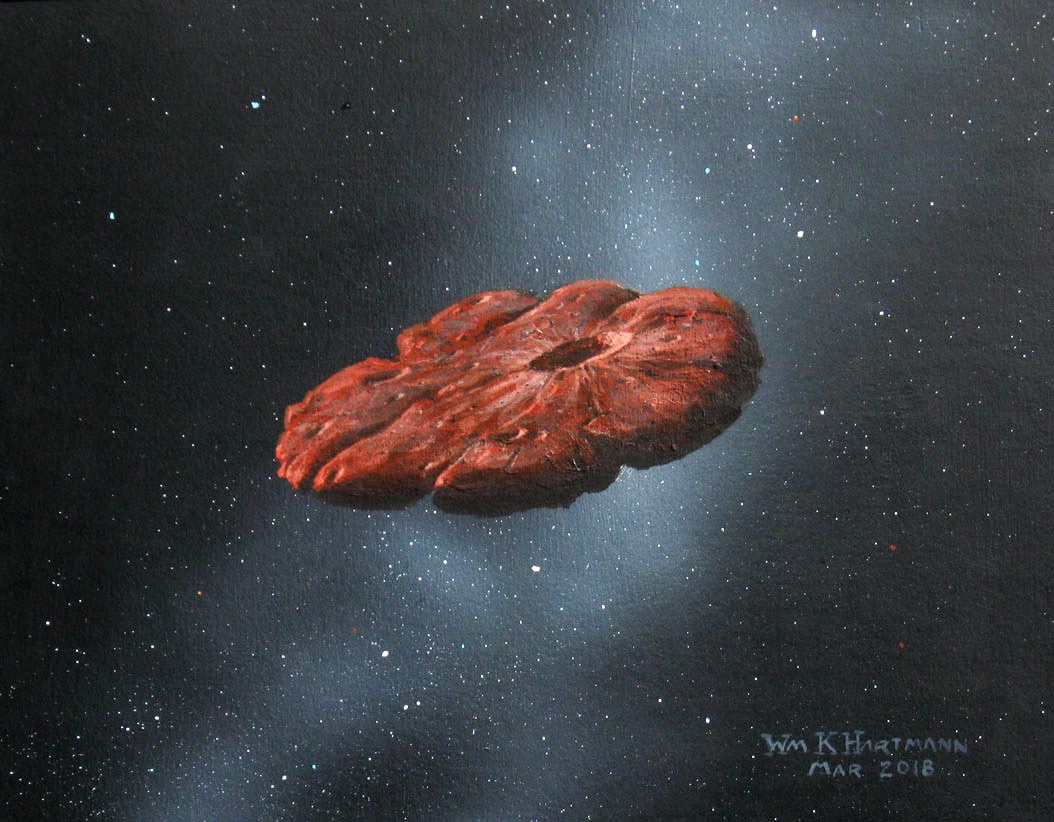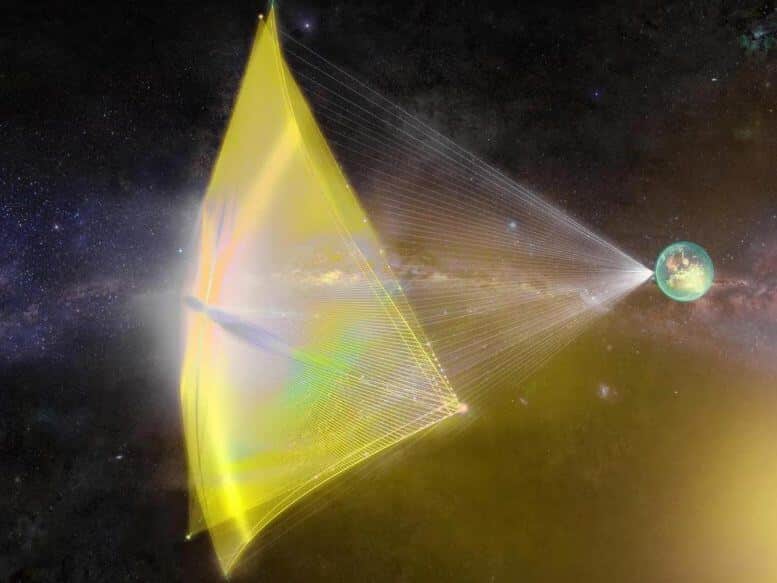Prof. Avi Leib claimed following the discovery of the first bone that arrived clearly outside the solar system that it was an artificial bone; At the beginning of 2021, other scientists proposed the claim that it was a nitrogen glacier that broke away from a planet in the formation of another solar system. Leib and his research partners published a response paper arguing that there is not enough nitrogen in the galaxy to sustain such objects. The debate continues.
By Matt Williams, UNIVERSE TODAY

On October 19, 2017, astronomers detected for the first time ever an interstellar object (IBO) passing through our solar system. This object, named 1I/2017 U1 Umoamua, confused astronomers who could not determine whether it was an interstellar comet or an asteroid. After four years and many theories (including the controversial "extraterrestrial solar sail" hypothesis), the astronomical community seems to have arrived at an explanation that fits all the observations.
According to the "nitrogen glacier" theory, Omoamoa is probably fragments of a Pluto-like planet in another solar system. In their latest study, titled "The Massive Budget Needed to Explain Omoamoa as a Nitrogen Glacier", Amir Siraj and Prof. Avi Leib (who proposed the extraterrestrial solar sail hypothesis) offered a formal counterargument to this theory. According to their new paper, there is a severe lack of Pluto-like exoplanets in the galaxy to explain the discovery of a nitrogen glacier.
In the paper in which he raised the possibility, Leib noted that the unusual nature and behavior of Omoamua was consistent with a solar sail. This includes the highly reflective nature of the bone and its profile, which appears to be cigar-shaped or pancake-like. More importantly, its sudden acceleration and deviation from its expected trajectory appears to have been caused by radiation pressure, which is exactly how solar sails achieve propulsion.

And the way it entered our solar system is also important, which allowed it to fly close to Earth after passing the closest point to our sun. In other words, the dynamics of its orbit allowed it to get a close look at the only habitable planet in our solar system, which is exactly what we would expect from an interstellar probe. These arguments appear in more detail in Leib's book "Outlander".
At the time of writing the book, all attempts to explain Omuamoa as a natural phenomenon were unsuccessful. Basically, there was no single explanation that explained its brightness, profile and acceleration while acknowledging that there was no evidence of outgassing. In addition, the sudden acceleration could not be attributed to gravitational forces because these would have slowed Umoamua at the same time.
In March 2021, two researchers from Arizona State University's School of Earth and Space Studies (SESE) proposed a new hypothesis. In two published studies, research associate Alan Jackson and Professor Stephen Desch of SESE suggested that Umoamua may be a fragment of nitrogen ice ejected from a young star system (probably in the Perseus arm of our galaxy) about 400 to 500 million years ago.
In their first paper, Jackson and Dash addressed the constraints on the size and composition of Omoamoa and showed how the albedo of Omoamoa is similar to the nitrogen ice on the surface of Triton and Pluto. In their second paper, they showed how such nitrogen ice fragments could be formed by the collision of extrasolar objects similar in composition to Pluto and Kuiper belt bodies.

According to their estimates, these collisions will produce and eject around one hundred trillion (~1014) objects into interstellar space, half of which will consist of water ice and the other half of nitrogen (N2). This population would be sufficient to provide the statistical significance of ABMs that is necessary to explain the discovery of Omuamoa. Equally important is the fact that a bone composed of N2 It will not produce a tail when it approaches our sun, because there will be no water vapor or CO/CO2 Let them take off.
"The nitrogen glacier hypothesis is attractive mainly because it explains the non-gravitational acceleration of Omoamoa. As in the case of a hypothetical hydrogen glacier, outgassing from a nitrogen glacier could not be detected in the Spitzer Space Telescope measurements of Omoamoa, which only limited the concentration of carbon-based molecules around Omoamoa. Therefore, the appearance (sublimation) of matter can conceivably drive the observed non-gravitational acceleration of the object."
One of the important arguments Leib makes in his proposal paper is that, regardless of the true nature of Omoamoa, its discovery implies a massive population of similar objects in our galaxy. In their controversial paper, recently accepted for publication in the journal New Astronomy, Siraj and Leib address the question of whether there is enough material in the Milky Way galaxy to form such a population of nitrogen glaciers.
The conclusion of Jackson and Dash's assessment was that there must be a strong population of "exo-Plutos" (Pluto-like objects) in our galaxy. For this to be the case, the stars in the Milky Way need to have enough material left over from the star formation stage to allow the formation of these dwarf planets. To test this, Siraj and Leib took the nitrogen ice model and looked at how much stellar material is required to cause it to form such objects.
Prof. Avi Leib said in response (to the scientist website, not in the original article): "The Omuamoa nitrogen glacier model does not fit the requirements of the material balance by several orders of magnitude. A factor of 3 does not solve the mismatch between the model and the data. We recently wrote an article with Tim Huang from Korea that shows that a glacier made of nitrogen will evaporate quickly as a result of cosmic radiation hitting it. To meet the requirements of the model, the glacier must start with a mass that is at least ten times greater than what reaches the solar system. This fact exacerbates the disagreement between the model and the nitrogen balance in the galaxy."
More of the topic in Hayadan:

5 תגובות
The important question is whether we are open enough to a parallel existence to our own lives.
What will satisfy us to decide that we are not alone. How do we reach such an agreement?
Yoav: Ockham's razor is not a scientific claim, it's just a matter of preference or convenience. There is no obligation to accept it.
Yoav, even the scientist needs headlines... and this is not the first and last time I have come across hyperbole as such without a response from an uninvolved expert, this method is not known here...
Anyone need an intro to Occam's Razor?
Prof. Leib says that "there is no way that there is enough nitrogen for such an asteroid", and at the same time says that "it is probably a solar sail".
Statistically, "there is very little nitrogen" is not the same as "there is no chance that there will be enough nitrogen". Even if the chance is slim, it exists and does not require the addition of new assumptions such as "the existence of extraterrestrials".
It is very sad that scientists do not learn the principles of critical thinking and therefore fall into traps in the style of "God of the gaps" (we do not know what causes X - and therefore we have proven the existence of God). And it's a shame that the scientist, the newspaper, doesn't feel responsible for providing the information and taking all these statements with the skepticism they deserve.
Well, it's hard for you to get the words extraterrestrial artificial bone out of your mouth even after Professor Leib's reaction that showed that there is not enough material to create such a nitrogen ice bone. And you're not even referring to the second interplanetary object that entered the solar system a year after the discovery of Umowa, the Borisov "asteroid" that is still traveling in the system. Two such objects within a year of each other, a statistical probability that tends to zero, and you are still not able to admit that something very unusual is happening and that the two objects are probably related to each other. A solar sail and the outward cargo he was dragging behind it? A probe followed by a cargo spaceship? Battleship? You never know, but statistics don't lie, it's not something natural.